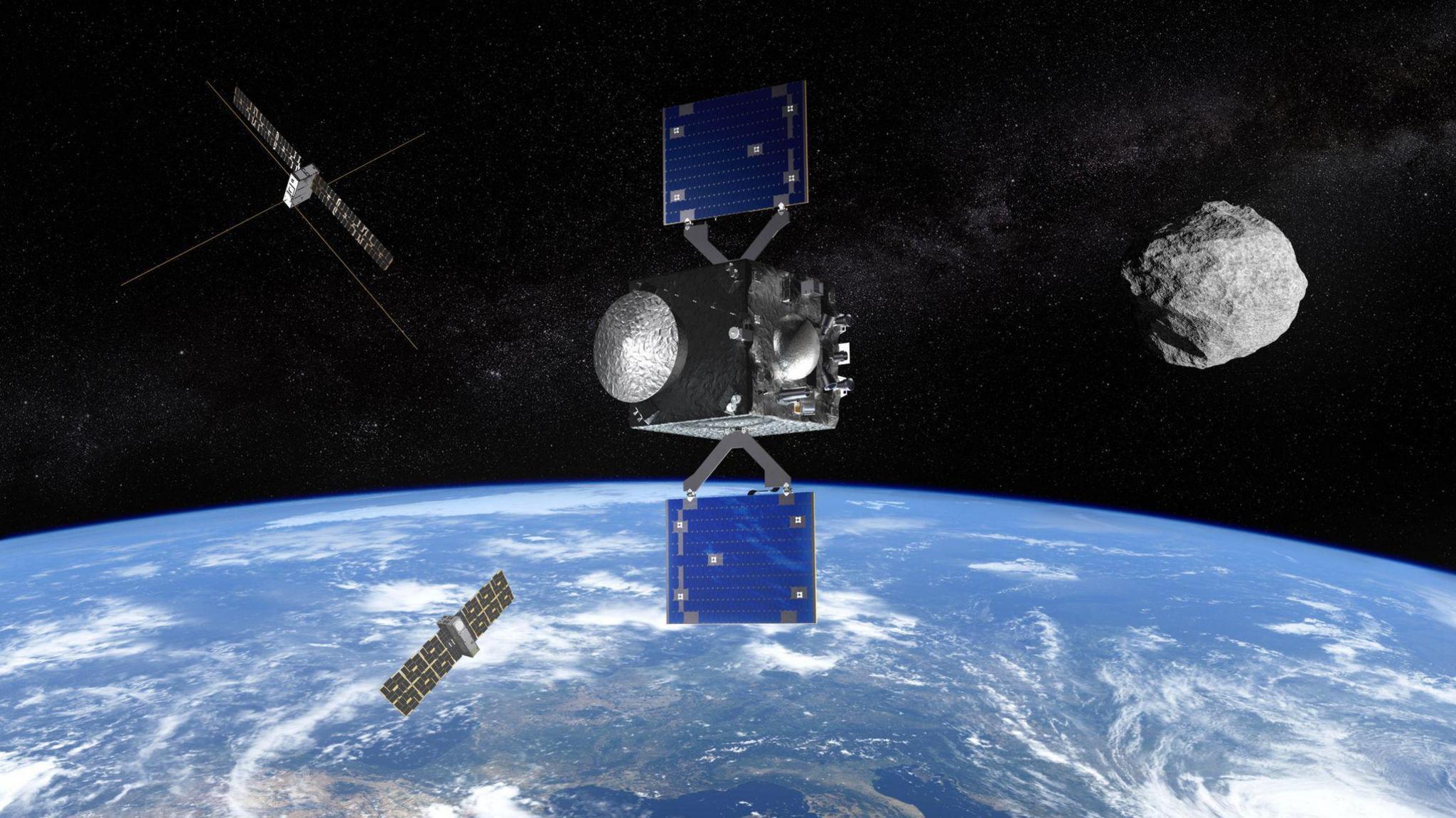Spacecraft will follow asteroid as it flies past Earth in 2029

This is what Ramses - ESA's asteroid-following machine - could look like
- Published
A large asteroid will be heading past Earth in 2029, and Nasa is going to follow it.
The asteroid - which is called 99942 Apophis - will pass within 19,900 miles of Earth.
Nasa will send a spacecraft to track the asteroid and move alongside it.
You might be able to see the asteroid when it goes past - experts think that around two million people in Europe and Africa will be able to spot it.
More like this:
- Published17 July
- Published15 July
- Published26 June
Why is Nasa and the ESA going to follow the asteroid?
An asteroid is a big chunk of rock that floats through space, orbiting the Sun
Back in 2019, Nasa announced a special new mission for protecting Earth against large asteroids.
The mission was tested with a project called DART, which stands for Double Asteroid Redirection Test.
They tested hitting an asteroid with a rocket, to see if they could change the direction that it flies in.
It was hoped that if the mission was a success, then if an asteroid ever did come close to Earth, they could redirect it. And luckily, it was successful.
Now, the ESA (European Space Agency) wants to get involved and learn more about how we could divert asteroids.
But don't worry - it's important to remember that a big asteroid heading to Earth would be very, very rare!
What's happening in 2029?
Asteroids are sometimes found in one area together, which is known as an asteroid belt
An asteroid named 99942 Apophis will do an impressive flypast of Earth on 13 April, 2029.
This mission is called Ramses - which stands for Rapid Apophis Mission for Space Safety.
The ESA wants to make the most of the asteroid being so close by. They will send a spacecraft up to keep track of the asteroid, to try learn more about how it moves close to Earth.
It will still be a whopping 19,000 miles from the planet, but it gives scientists a great chance to be 'up close' with an asteroid.
